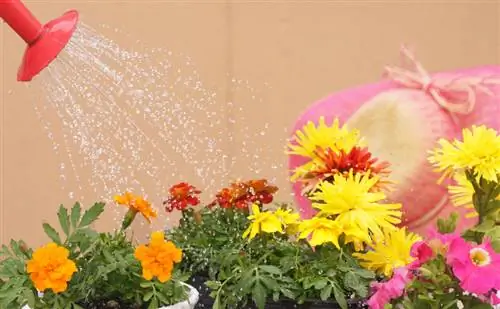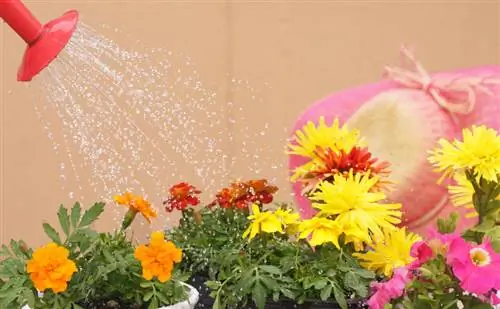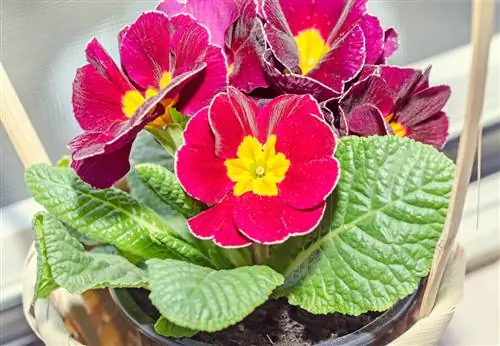- Author admin [email protected].
- Public 2023-12-16 16:46.
- Last modified 2025-01-23 11:20.
The marigold, which belongs to the daisy family, is one of the most popular flowering plants in the garden. No wonder, because with proper care it turns out to be an extremely grateful and blooming garden beauty.

How do you care for marigolds properly?
When caring for marigolds, you should water regularly when the upper layers of soil feel dry, fertilize sparingly and remove spent flowers. Since the plant is not hardy, you can take seeds or transplant individual specimens indoors.
How often does it need to be watered?
Although the marigold copes well with longer dry periods in its natural home, you should not let the plant thirst unnecessarily on hot days. Water whenever the top few inches of soil feel dry. This may even be necessary twice a day on hot summer days.
If you have grown the marigolds in pots on the balcony, the pretty marigold needs significantly more water than in the bed. Therefore, check whether additional watering is necessary, even on rainy days.
How to fertilize?
Tagetes are quite undemanding. Over-fertilization quickly becomes apparent in a lack of flower formation. Instead, the marigold shoots up and produces plenty of foliage. Marigolds planted in planters should therefore not be fertilized at all, as the substrate contains enough nutrients for a whole year of gardening. In the bed you can provide the marigold with additional organic fertilizer once or twice a season.
Do the marigolds need to be cut?
A strong pruning is not necessary. Since each marigold flower lasts about three weeks, all you have to do is cut off everything that has faded every week.
What happens in winter?
Since the marigold is not hardy, it dies quickly in sub-zero temperatures. If you would like to continue cultivating a particularly beautiful specimen, you should transplant it into a pot in good time and bring it into the house. It is not necessary to overwinter the marigolds in a space-consuming manner, as the little beauties can easily be grown from self-gathered seeds.
What diseases and pests are threatening?
The marigold is surprisingly resistant. However, flowers and leaves are a special treat for many snails. If you use the marigolds as an ornamental plant, you should protect the marigolds from the voracious animals with a snail fence (€89.00 on Amazon).
Tip
Some marigold varieties such as Tagetes tenuifolia and Tagetes filifolia have edible flowers that taste very aromatic.






